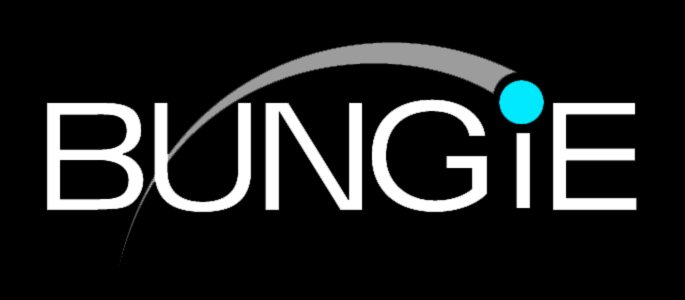Reporters caught up with Bungie's COO Pete Parson to talk about life after Halo and their next game destiny. This is no doubt the biggest challenge Bungie has come up against, Pete explains to us how the idea of destiny came about, how much of an impact their project will be on them, the technical side of destiny and more.
Credits to Lil Dog for finding these.

VentureBeat Interview
Parsons left his job at Microsoft to become the COO at Bungie after Halo launched. In 2007, he left Microsoft to start Meteor Solutions, a viral-marketing startup, and worked double duty for a time. As Bungie prepared to leave the Microsoft fold and move on to a new franchise, Parsons came back. He returned to the studio in 2010. Parsons is now fully focused on getting Destiny out the door and managing the culture and talent inside Bungie’s 80,000-square-foot headquarters in Bellevue, Wash.
After a few years of secrecy, Bungie finally revealed concept art from its new game universe while announcing that Destiny would debut on the PlayStation 4 (and likely other platforms). We visited Parsons at Bungie HQ last week, and here’s an edited transcript of our conversation.
GamesBeat: You must feel good right now.
Pete Parsons: [Laughs] Well, I think it feels good to be Bungie right now. We’re always about doing great things and ambitious things. That’s because we have such a great team, because we can do that. It’s a great time to be at Bungie. It’s an energy that many people haven’t felt since some of the earliest days of Halo. That’s exciting. We still have a lot of the old guard around, but we’ve been able to bring on a massive amount of new talent.
GamesBeat: Did somebody in particular sell you on the idea of Destiny? I think you came in after it started, right?
Parsons: No, we’ve all been working from the very beginning. Well, it depends on how you look at it. Destiny has been an idea bouncing around since even before the technology to make it existed.
Destiny is very much a product of everybody at Bungie, but its inception comes from Jason [Jones, co-founder of Bungie]. This is very much a vision that Jason has. Then, he gathers a small group of really talented people who have been here a long time, and they begin hammering on it. It’s had multiple incarnations until it finally landed into what it is today. That’s fun to watch. Not just on technology, but art and story.
GamesBeat: It sounds like you did have options, though. Was there a point where you bought into Destiny and said, “I want to do this too?” For 10 years or whatever it will be.
Parsons: As naïve as this may sound, if Jason believes in something and he’s ready to go for it, I’m in. No joke, I still walk in the door every day and think, “Who gets to do this? This is awesome, to be a part of this thing.” Even when I’m having a ****ty day, I feel that way. There are so many other things I could do that, for me, wouldn’t be as satisfying or as interesting. They might be enriching. They might satisfy some level of my curiosity. They might be exciting. But there’s something about these people and this place.
GamesBeat: Did you feel any tug when Halo went off in another direction, with Microsoft’s 343 Industries, and then Bungie went its separate way with Destiny?
Parsons: Personally, I did not. I love the Halo universe. I think it’s great. It inspires me. It inspires my children. They’ve never played, but they know the universe. One, though, I’ve spent a lot of time with Halo. Two, the mythic science fiction of Destiny immediately attracted me. It was that first image … It’s a simple image, but it took weeks of back-and-forth to put together. There were a few images already, maybe three or four, but they didn’t speak to what it was. The moment that image was done, it was like, “That’s it.” That’s the game. That’s the idea. That’s a place that I want to be.
GamesBeat: Is that published now? Which image is that?
Parsons: I don’t know if it’s ever been published. It was just this very striking image that had that feeling of — this is not purely a science fiction universe. It’s not just about two big military-industrial complexes smashing into each other. It’s a place with myths and lore. There’s a guy with sci-fi armor on, and yet he’s got a rifle that looks like it’s from an ancient desert somewhere. It was super cool. That certainly spoke to me. I didn’t look back.
At the time, we were working on both Halo: ODST and Halo:Reach. I still love the Halo universe. It’s an interesting place. But I think what we’ve been able to do is create an incredibly deep fiction and a place that you’re going to want to be in.
GamesBeat: You had a leak. You had some interesting reactions. What was it like, looking at the reaction from the inside?
Parsons: You’re never really excited when you first learn that a leak happens. Then you get to see the reaction. We had this really quick thing. We said, “There’s a leak happening. We can either say nothing, or we can say, ‘Yeah.’” Instead of looking at images that we didn’t want you to see, let’s give you one that we want you to see. So, we released the picture of the Fallen. When our community, who we love, reacts so positively to an image — “Oh my God. That’s so great. That’s a place I want to be in. I can’t wait to learn more about that” — we go from, “Oh, man” to “Sweet!” Within less than half an hour, we were like, “This is the course of action. Let’s go.
TechHive Interview
Game On: Where did the idea for Destiny come from?
Parsons: After Halo, we asked ourselves some tough questions. What was worth doing? What comes next? How do we turn a genre on its head? We have a studio filled with incredibly talented and passionate people, and we could have pointed them at anything, but we wanted to do something ambitious. That ambition was Destiny—a universe filled with mystery and adventure set within our own solar system.
What were your goals heading into this new project?
We took all of our combined talent and experience and set out to make a game that would entirely redefine how people play action games. It’s a Bungie action game set in a bold new universe. Players create their own unique characters that grow and change over time. From the ground up, Destiny is built to be a social and cooperative game, but it’s also filled with a broad range of activities, from solo to group, casual to intense and cooperative to competitive.
What was it like starting anew after being immersed in the same universe for so long?
Creating this world is the most ambitious challenge we've ever taken on. It’s a new intellectual property with greater breadth of scope than anything we've done before. Huge worlds, larger than any we've ever built. And these are living, open worlds, with evolving stories, changing time of day, and plenty of players. That’s a bold vision, but it creates a lot of challenges, because Destiny is unlike any other action game.
How did this impact the creativity of your team for Destiny?
It’s an exciting time to be at Bungie and it started the moment we made the decision to commit the entire team to this single vision. That energy grows with each and every milestone. Every day I walk in the door I am inspired by the insane amount of talent that work and play within our walls.
What are the challenges that exist today in launching a new IP like Destiny?
We have a bold vision that requires a scary amount of art, design, technology, and creative focus to pull off. It’s a huge challenge. For example, our technology has to take this great action game, fuse it with a richly simulated world that we fill with unique player characters, each with their own history and unique abilities and characteristics. Our technology has to create a seamless social world where those players can meet up and experience their own shared stories, and it has to do it all invisibly.
How do you hope Destiny pushes the shooter genre forward?
We want players to tell their own stories. We’re going to give them the ability to customize their character, and their experience. Then they’re going to go on epic adventures with their friends. You can play Destiny solo, but we believe that everything fun to do in Destiny is more fun when you’re playing with friends. It’s that unpredictable human element that will create the most important moments in Destiny.
Can you talk about the technology engine, Grognok, behind this game and what you feel it opened up for your development?
We had to rebuild our engine and tools to support Destiny’s enormous size, scope and vision. Our graphics engine, world builder, lighting engine, and more were all custom-built to support the team’s vision. But all the tech doesn’t mean anything by itself. What matters is how it creates player stories. It’s been a huge challenge, but we’ve already begun to see huge rewards for all the hard work.
How have you utilized performance capture or new technology to work with the actors in this story?
Bungie has our own full-featured performance and motion capture studio on site, lovingly dubbed “Spandex Palace.” We’re not ready to crack the lid on the story, or our talented actors yet, but it’s something we’re looking forward to talking about in the future.
What are you most excited about gamers being able to experience with Destiny?
I hope gamers will put Destiny on the same shelf of great memories as they put amazing entertainment experiences like Star Wars, Raiders of the Lost Ark or Lord of the Rings. I believe the efforts and talent of our team is creating a universe that will ultimately have deep meaning for the people who come and visit our world.
Halo has become a fixture in eSports. Have you thought of eSports (something Treyarch focused on with Call of Duty: Black Ops II) when designing the multiplayer of Destiny?
We’re not talking specifics about any of Destiny’s core activities at this time. We’re too busy playing.


Recommended Comments